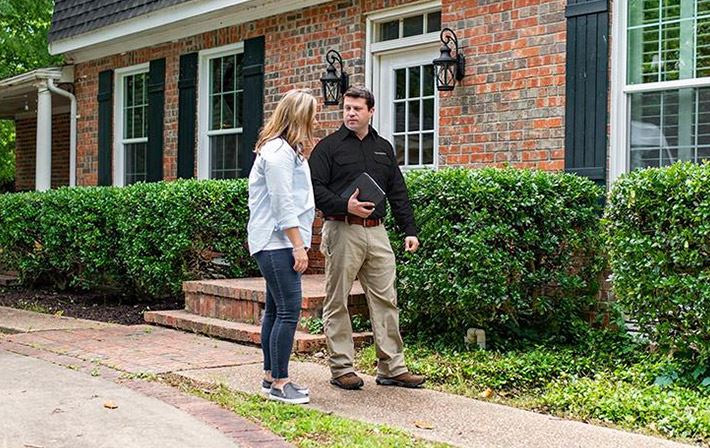
Occasional Invader Identification & Prevention
What are occasional invaders?
Occasional invaders are nuisance insects known to enter homes and other structures at certain times throughout the year. Occasional invaders typically become a nuisance inside homes when the weather outside becomes too hot or too cold for them and pushes them inside in search of food and shelter.
Four common occasional invaders living in our area are centipedes, crickets, earwigs, and millipedes.
Centipedes - Centipedes are long, many-legged insects with worm-like bodies and dark brown coloration. Centipedes’ bodies are made up of numerous segments, with each segment having its own pair of legs. Centipedes use the sharp jaws protruding from their heads to bite their prey and inject them with paralyzing venom.
Crickets - Crickets are yellowish-brown or brown insects known for their characteristic chirping (though not all crickets chirp). Their powerful legs allow them to jump long distances while the antennae on their heads allow them to sense where they’re going.
Earwigs - Earwigs are long, smooth insects that are dark brown or reddish-brown in color, with pincer-like appendages called cerci protruding from their abdomens; they have wings, but rarely use them. While they can appear dangerous, they cause little to no harm when touched and are not known to spread any diseases to humans or other animals.
Millipedes - Millipedes are much smaller than centipedes, but built similarly. They come in a variety of colors including black, dark brown, red, and orange, and can have numerous patterns on their bodies. Millipedes feed on decomposing vegetation, feces, and organic matter they find in the wild.
Are occasional invaders dangerous?
Occasional invaders are nuisance pests. Therefore, they are not considered dangerous to humans or pets. In general, occasional invaders look far more dangerous than they actually are; however, when entering or surrounding homes in huge numbers, they can be very difficult to control and eliminate. While centipede bites are rare, they do happen on occasion – especially when directly handled; fortunately, their venom is not strong enough to cause any lasting damage to humans or pets that come into contact with them.
Why do I have an occasional invader problem?
Occasional invaders move inside to take advantage of a temperature-controlled, warm environment. They move inside through cracks in the foundation and exterior walls of homes and buildings, through gaps around windows and doors, and through spaces around utilities and vents leading indoors through exterior walls.
Where will I find occasional invaders?
Occasional invaders live or hide out in dark, damp places such as under mulch and landscaping ties, under rocks, and in landscaped areas. When they move inside, they take up residence in humid, dark, hard-to-reach areas of homes, making them difficult to eliminate. Attics, walls voids, crawl spaces, basements, bathrooms, and laundry rooms can all become home to occasional invaders.

Why Choose Termishield?
-
Customer Care Focused
-
Free Inspections
-
Honest & Transparent
-
Over 25 Years of Experience
How do I get rid of occasional invaders?
If occasional invaders are getting on your last nerve, it’s time to look for a professional solution. At Termishield, we have years of experience combating pest invaders of all shapes and sizes. No matter your pest, we’ll use state-of-the-art methods to eliminate it and help you take back your home. Don’t let occasional invaders give you grief for another day; contact the local pest professionals at Termishield to schedule immediate pest control services.


Hear From Our Happy Customers
At Termishield, your satisfaction is our priority! See for yourself what our customers have to say about working with us.
-
“Nathan was very helpful and professional.”- Kathy M.
-
“They got me on the schedule quickly for a wasp nest removal.”- Kathleen M.
-
“They go above and beyond every time.”- Danielle S.
Termishield's Blog
Want all the latest news or updates? Browse through our blog to read our most recent posts and featured articles.


